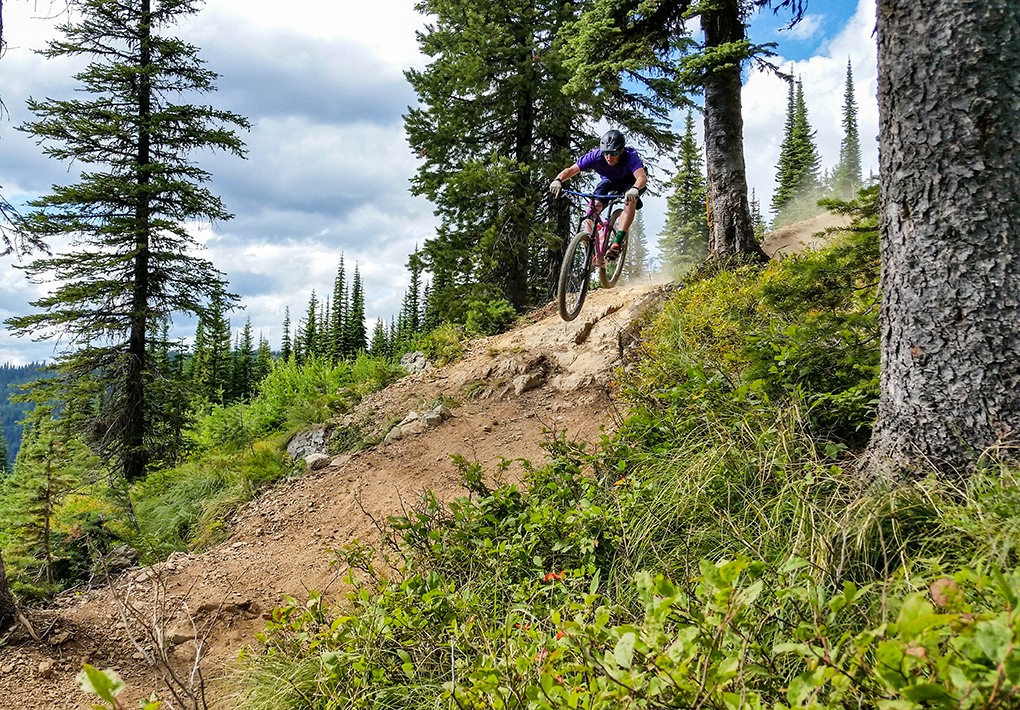
DT Swiss OPM O.D.L. 120 Fork
Wheel Size: 29”
Travel: 120mm
Offset: 45mm
Axle to Crown: 525mm
Blister’s Measured Weight: 1635g (19cm / 7.5” steerer)
MSRP: $1,159.00
Street Price: ~$890.00
Bolted To: Canfield Yelli Screamy
Reviewer: 5’9”, 155 lbs.
Test Location: Whitefish, MT
Test Duration: 10 rides
While DT Swiss is probably best known for their hubs, rims, and spokes, they also make a number of trail-oriented forks and air shocks, and they’ve been doing so for quite a while.
So for the second installment of our 29’er fork review series, we’ll take a look at their OPM O.D.L. 120 in the 29” size to see how it measures up against the competition.
Options
The OPM series comes in three different travel configurations: 100mm, 120 / 130mm, and 140 / 150mm.
It also comes in two different damper options. We tested the O.D.L. version (Open, Drive, Lock), but a slightly less expensive O.L. version (Open, Lock) is also available.
All versions of the fork run on the same basic chassis with 32mm legs, a reverse arch, a tapered steerer, and a 15mm through axle.
The Chassis
The centerpiece of the OPM’s chassis is the “One Piece Magnesium” (OPM) cast lower unit that features a reverse arch. The fact that it’s one piece and cast magnesium isn’t all that unique— most higher end forks use cast magnesium lowers. And the OPM’s reverse arch also isn’t entirely unique. Manitou has been using a fairly similar design for years.
But two things do set the OPM’s lowers apart:
First, DT Swiss has really taken out material wherever possible to make this thing light. It has substantial voids worked into the backside of the arch, and excess material has been removed along the legs and around the dropouts.
Second, the lowers provide a ton of tire clearance. This might not be the first concern for the average XC racer, but as plus-sized wheels and tires become more prevalent, the OPM will accommodate fat tires better than most other forks. Particularly if you’re considering sticking some 27.5+ wheels and tires into your 29er frame, the tire clearance on this fork is noteworthy.
One downside of that reverse arch is that it makes for some goofy cable routing for the front brake. The best configuration I could come up with involved the brake line threading up the arch and under the crown. It seemed to work fine, but it looks weird.

The remainder of the chassis is relatively straightforward, albeit built with an eye toward weight savings. The crown is aluminum, and it has built in cable stops for an optional handlebar remote (which I haven’t tried, so no comments there).
The steerer tube is aluminum, and is only available in a tapered configuration. As noted above, the stanchions are 32mm, which is about par for the course for a fork in this class.
The fork is only available in a 15mm axle configuration, so quick release and 20mm aficionados are going to have to come to grips with the fact that 15mm axles are the standard for this type of fork. The through axle is DT Swiss’s RWS system, which is quick to remove and install, and can easily be “clocked” to whatever position you want.
The downside of the RWS axle is that it doesn’t have any cam mechanism, and while it threads into the left side of the fork, it doesn’t clamp in any way on the right side. Arguably this reduces stiffness a bit, and I did have the axle rattle loose on occasion.
Stiffness
Without sophisticated equipment, it’s tough to accurately quantify a fork’s stiffness. That said, the OPM seemed fairly average. It’s a lightweight trail fork, so I didn’t expect it to have DH-level stiffness. But all in all, it fared reasonably well—I found that it held a line decently, which seemed to indicate pretty good torsional stiffness.
A good portion of that stiffness I’d attribute to the fairly large reverse arch. The OPM did alright at plowing through rough rocks and diagonal roots that like to pull the wheel off line. It’s definitely not nearly as stiff as something a bit burlier like a Rockshox Pike, but given its light weight, I didn’t have any major complaints.

I did notice that when I was on the brakes hard, there was some significant fore-aft flex. This is something that I’ve noticed with most forks that have 32mm stanchions, so again, the OPM isn’t horrendous for its class, but it’s also not great, either. The downside of that rearward flex is that it can cause the fork’s suspension to bind up a bit, making it less supple when braking down something steep.
NEXT: Geometry, Air Spring, Etc.

Excellent, detailed review. Exactly what the gear junkie in me was seeking. Looks like I’ll hang-on to my Dual Air, 120mm SID XX G2 a bit longer!